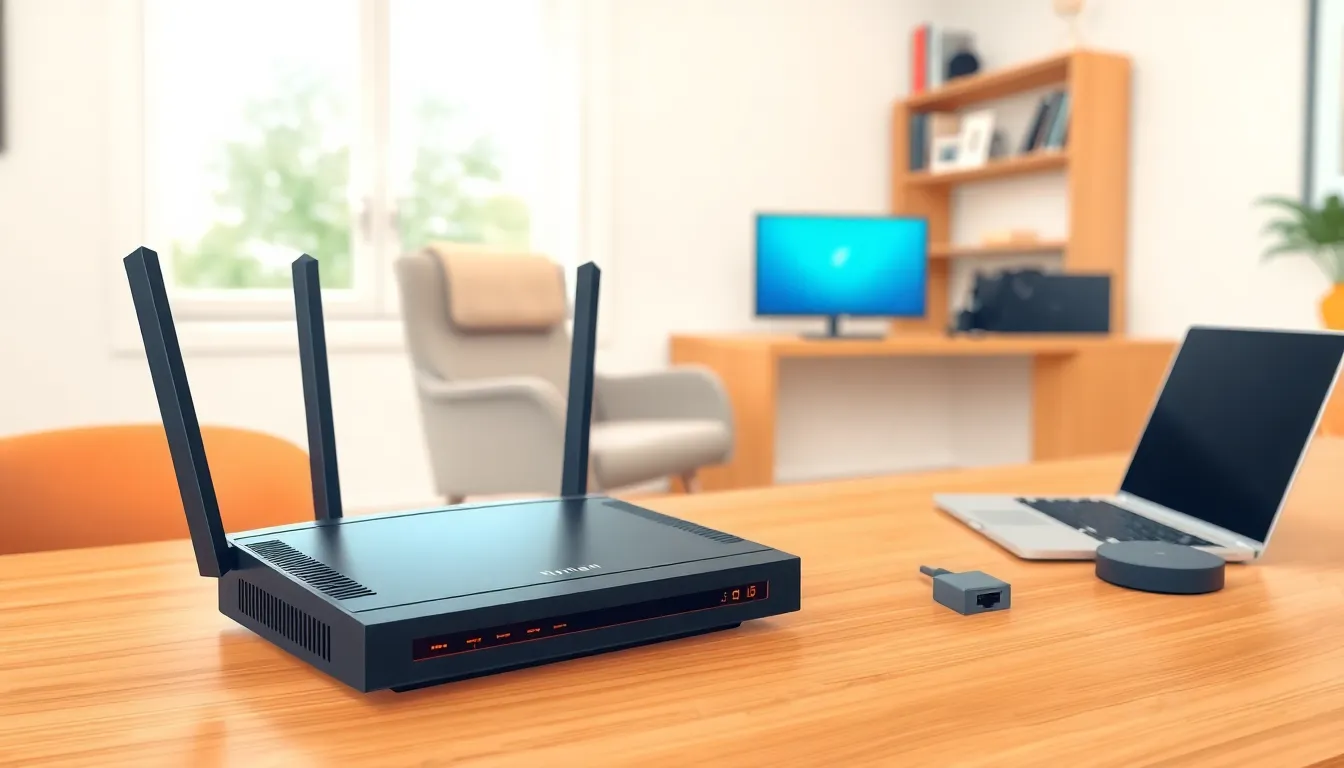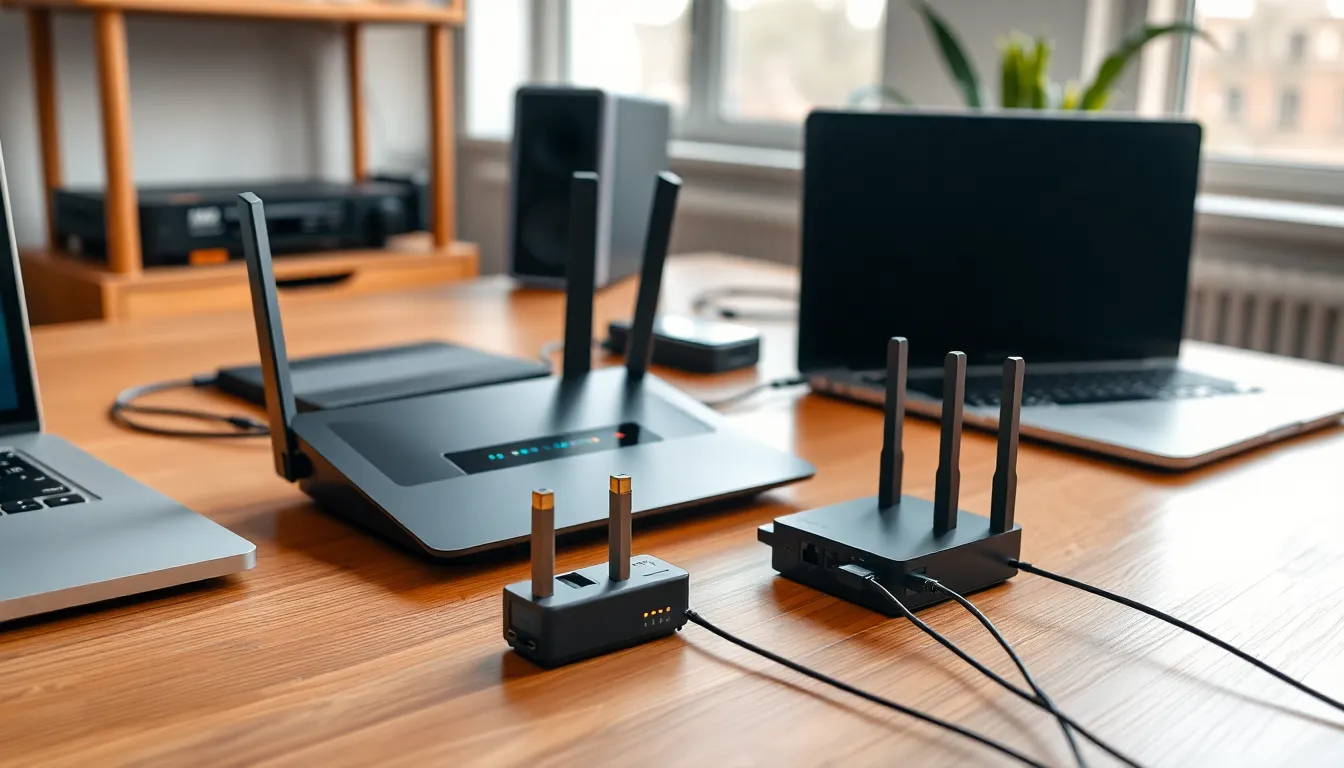In today’s tech-savvy world, a reliable wireless network is as essential as a good cup of coffee—without it, productivity can hit a wall faster than a toddler on a sugar rush. Whether it’s streaming your favorite show or working from home, a solid Wi-Fi connection keeps everyone happy and connected. But let’s face it, setting up a wireless network can feel like trying to assemble IKEA furniture without the instructions.
Fear not! With a little guidance, anyone can conquer the chaos of routers, extenders, and passwords. This article will walk through the steps to establish a seamless wireless network that’ll have you surfing the web with ease. So grab your favorite snack, sit back, and let’s dive into the world of Wi-Fi wizardry.
Table of Contents
ToggleUnderstanding Wireless Networks
Understanding wireless networks provides a foundation for setting up a reliable connection. These networks facilitate communication among devices without needing physical cables.
What Is a Wireless Network?
A wireless network uses radio waves to connect devices within a specific range. These connections allow multiple users to access the internet simultaneously without cumbersome wires. Devices such as routers and access points play crucial roles in maintaining connectivity. Typically, these networks rely on standards like Wi-Fi, which defines how data is transmitted wirelessly. Frequencies of 2.4 GHz and 5 GHz are common for transmitting signals.
Benefits of Wireless Networks
Wireless networks offer numerous advantages that enhance usability and convenience. Flexibility stands out, as users can connect devices from various locations without network complications. They enable mobility, allowing users to move freely while staying connected to the internet. Installation simplicity adds to their appeal since users can often set them up without professional assistance. Moreover, these networks accommodate multiple devices, making them ideal for homes and offices with numerous connected gadgets. Security features like WPA3 encryption further protect user data, reinforcing the reliability of wireless networks.
Required Equipment for Setting Up Wireless Network


Setting up a wireless network requires specific equipment to ensure optimal performance and connectivity. Understanding these components leads to smoother installation and operation.
Routers and Modems
Routers serve as the central hub for a wireless network. They manage data traffic between devices and the internet. Modems connect to the internet service provider and facilitate communication with the router. A combination device called a gateway includes both functions in one unit. Opting for a dual-band router enhances performance by supporting both 2.4 GHz and 5 GHz frequencies. Ensuring that the router supports the latest Wi-Fi standards, such as Wi-Fi 6, allows for faster connections and better efficiency.
Network Adapters
Network adapters enable devices to connect to a wireless network. They can be built into laptops and smartphones or added via USB for desktops. Using an adapter that supports the latest standards enhances speed and connectivity range. Selecting the right adapter ensures compatibility with existing network equipment. Additionally, powerline adapters extend the network’s reach by using electrical wiring to transmit signals. Prioritizing high-quality adapters contributes to a more reliable wireless experience.
Steps for Setting Up Wireless Network
Setting up a wireless network involves careful planning and the right configuration for optimal performance.
Planning Your Network Layout
Identify the location for your router to ensure maximum coverage. Placing the device in a central area helps distribute the signal evenly throughout the space. Consider potential obstacles like walls and furniture that might interfere with signal strength. Plan for devices that need a stable connection, such as gaming consoles or smart TVs. Map out areas where devices will connect, ensuring a user-friendly setup.
Configuring Your Router
Access the router’s user interface via a web browser. Enter the default IP address found in the router’s manual. Change default login credentials for security purposes. Set up the Wi-Fi network name, also known as SSID, ensuring it reflects the purpose. Choose WPA3 encryption for enhanced security. Adjust settings like bandwidth and traffic prioritization for optimal performance, especially if multiple devices connect simultaneously.
Connecting Devices to the Network
Enable Wi-Fi on each device to start the connection process. Search for the network name set earlier and select it from the list. Input the password configured during router setup to authenticate the connection. Confirm successful connections on the device and check internet access. For devices without built-in Wi-Fi, use network adapters or powerline adapters to join the network seamlessly.
Troubleshooting Common Issues
Setting up a wireless network can lead to various issues. Addressing these common problems quickly ensures smooth connectivity.
Connectivity Problems
Connectivity problems can arise from several sources. Check the router’s placement first; move it to a central location to enhance signal distribution. Devices can also lose connection due to interference from walls or appliances. Restarting the router often resolves transient issues. If devices still struggle to connect, verifying Wi-Fi credentials is crucial. A simple misentry can prevent access to the network. Lastly, ensuring the router’s firmware is up to date can fix compatibility issues with newer devices.
Slow Internet Speeds
Slow internet speeds frustrate users when streaming or browsing. Begin by testing the internet speed using reliable applications to identify issues. Signal strength plays a pivotal role; if the signal is weak, consider relocating the router or utilizing extenders. Other devices connected to the network may consume bandwidth, leading to decreased speeds. Disconnecting unnecessary devices can free up resources for critical tasks. Finally, checking with the Internet Service Provider ensures the plan meets speed requirements and may reveal outages or service limitations.